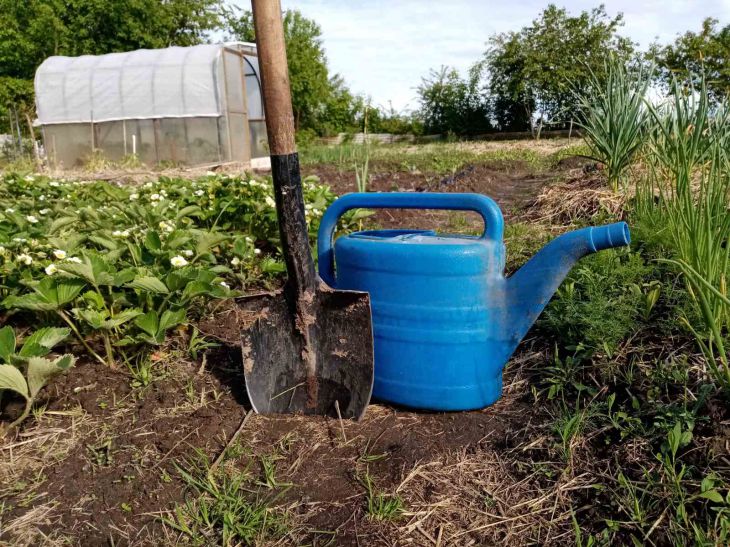Goutweed is one of the most common and unpretentious weeds in the garden.
It is very difficult to control, especially in permanent plantings such as perennial beds, as it reproduces both by seed and through underground rhizomes.
This plant is native to Europe and Asia. Its natural habitat is nutrient-rich, humus-rich soil in the light shade of trees, where it conquers large areas with its underground creeping shoots (rhizomes). Including the white umbel-shaped inflorescences, goutweed can grow up to 100 centimeters in height, but the foliage cover usually does not exceed 30 centimeters.
Ground elder quickly grows and takes over territories thanks to its extensive system of underground roots. Therefore, if it is present in your garden, it is difficult to get rid of. The fight against this weed is labor-intensive and lengthy, but inevitable. Let's consider what can be done to destroy ground elder without using harmful chemicals.
Destruction of the above-ground part
It is very important to consistently combat even the smallest colony of goutweed in the spring, as soon as the first tender leaves appear. If you regularly knock down the plants with a hoe at ground level, they gradually weaken, and the plant carpet noticeably decreases. If you are afraid that the hoe can damage the roots of useful plants, you can simply pluck off the leaves of the goutweed as often as possible. This deprives the weeds of sunlight and oxygen, and they gradually die.

For the same reason, with regular mowing and weeding, goutweed weakens so much that it eventually dies.
However, this method is tedious and time-consuming, because even after a year the weed still has enough strength to germinate again in places.
Removing roots with a pitchfork and sifting
A labor-intensive but effective way to rid your garden of this weed is to remove the roots from the soil. To do this, take a pitchfork and carefully loosen the soil. If goutweed has taken over the bed, the ornamental plants should be carefully removed and the roots of the goutweed pulled out.
This method works much better with bare patches than with beds that have crops. If the soil is relatively loose and sandy, sifting will help. Loamy soil is too dense for this. Proceed with extreme caution, as goutweed can re-sprout even from small pieces of root. Try not to break the roots or pull them out whole.
And do not dig up the soil overgrown with goutweed, because this will not solve the problem. After digging and planting, the bed temporarily looks good, but cuttings stimulate the growth of rhizomes, and the weed very quickly reclaims the lost territory.
It is important that you do not simply throw the leaves and rhizomes of goutweed into the compost, as there is a high risk that they will continue to grow there. Therefore, first let the plants dry in the sun for a few days. Goutweed can be used to make a nutrient-rich infusion, which is used, for example, to fertilize tomatoes and other plants.
Covering weeds with cardboard or fleece
In unplanted areas or under large trees, goutweed can be controlled relatively easily by mulching the entire soil with a layer of thick cardboard, fleece, or other opaque material. First, cut off the goutweed, then lay out the covering material.
The cardboard is covered with bark mulch, under which it rots and can be buried in the soil the following year before planting the area. Mulch or stones are also used to secure other types of covering material.
With the covering method, it is important that the goutweed is "starved". The covering deprives it of light and oxygen. In two years at the latest, when the cardboard has completely rotted, the rhizomes will also die. However, the seeds remain viable for a long time, so the area will still need to be closely monitored.
Plants as a remedy for goutweed
Experienced gardeners consider potatoes to be an effective means of fighting weeds: with their dense foliage, they shade the ground and at the same time compete with goutweed for water and nutrients. Annual cultivation of potatoes is recommended, especially before planting in a new plot of land, as they not only suppress weeds, but also loosen the soil.
Add fast-growing, tall, competitive perennials to your garden that will repel goutweed. For example, you can use knotweed, sunflowers, rue, geraniums, or Chinese reed. Once the plants are established, you can save yourself the trouble of fighting goutweed or replacing the soil, which is a lot of work.
Practical use: just eat goutweed
Before it became a weed in home gardens, goutweed was cultivated for centuries as one of the most famous wild plants and medicinal herbs. This plant contains vitamin C, provitamin A, proteins, essential oils and various minerals. The leaves have an intense aroma and are excellent as an ingredient in salads or soups. The taste of goutweed is similar to celery and parsley, and it can not only be blanched, but also eaten raw in a salad or pesto sauce. Soups, casseroles or vegetable dishes can also be enriched with this plant.








